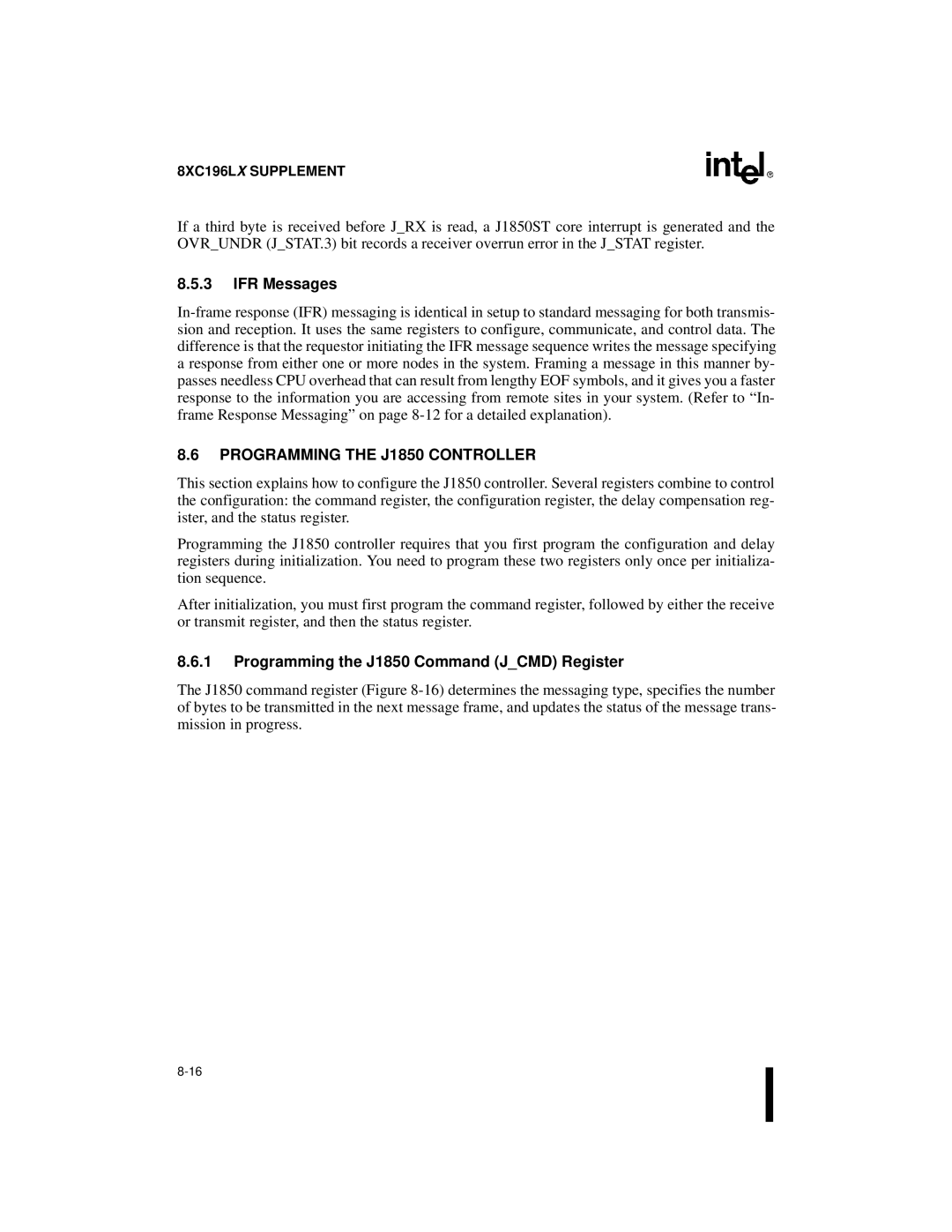
8XC196LX SUPPLEMENT
If a third byte is received before J_RX is read, a J1850ST core interrupt is generated and the OVR_UNDR (J_STAT.3) bit records a receiver overrun error in the J_STAT register.
8.5.3IFR Messages
8.6PROGRAMMING THE J1850 CONTROLLER
This section explains how to configure the J1850 controller. Several registers combine to control the configuration: the command register, the configuration register, the delay compensation reg- ister, and the status register.
Programming the J1850 controller requires that you first program the configuration and delay registers during initialization. You need to program these two registers only once per initializa- tion sequence.
After initialization, you must first program the command register, followed by either the receive or transmit register, and then the status register.
8.6.1Programming the J1850 Command (J_CMD) Register
The J1850 command register (Figure
